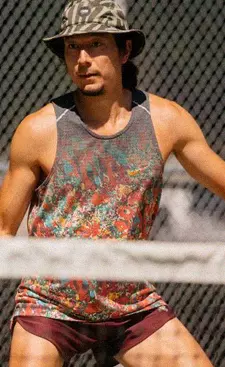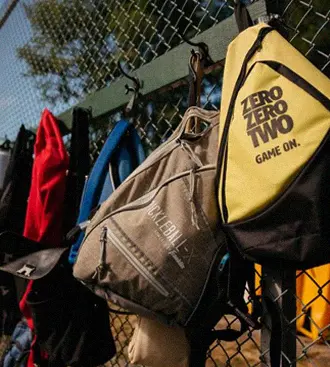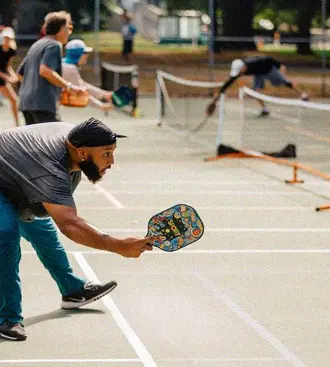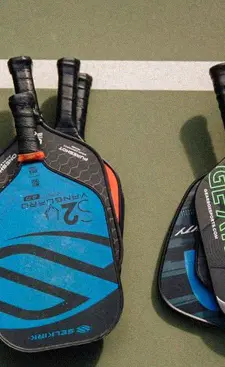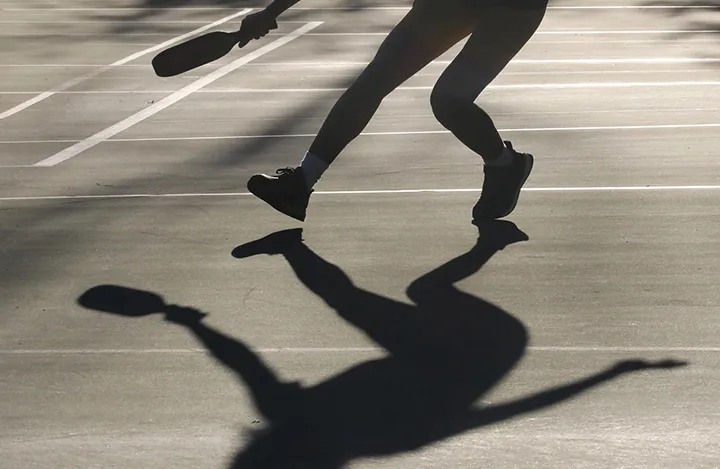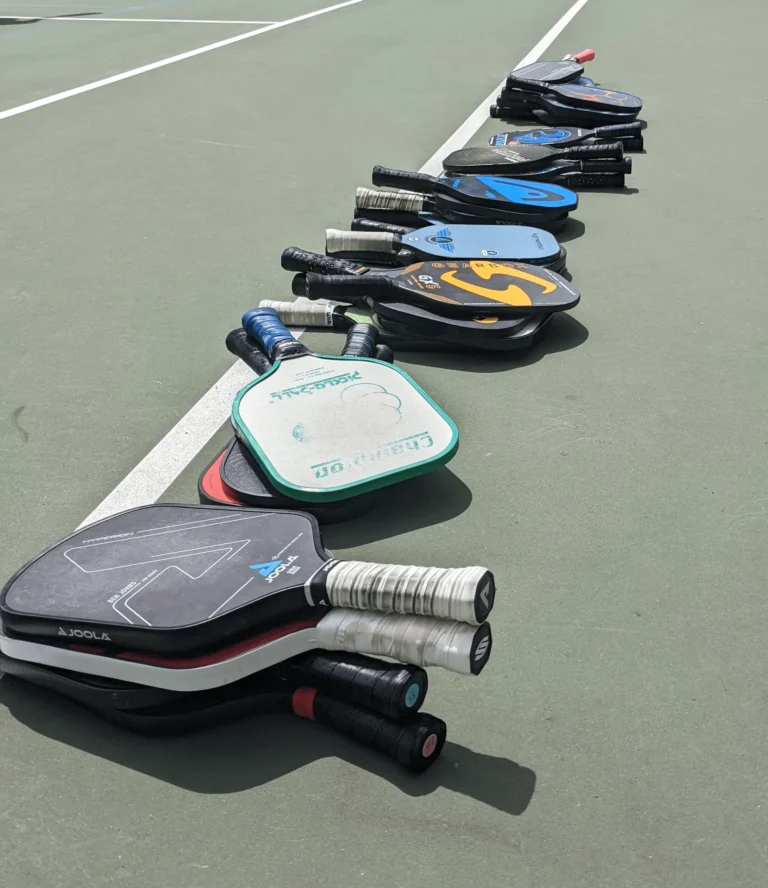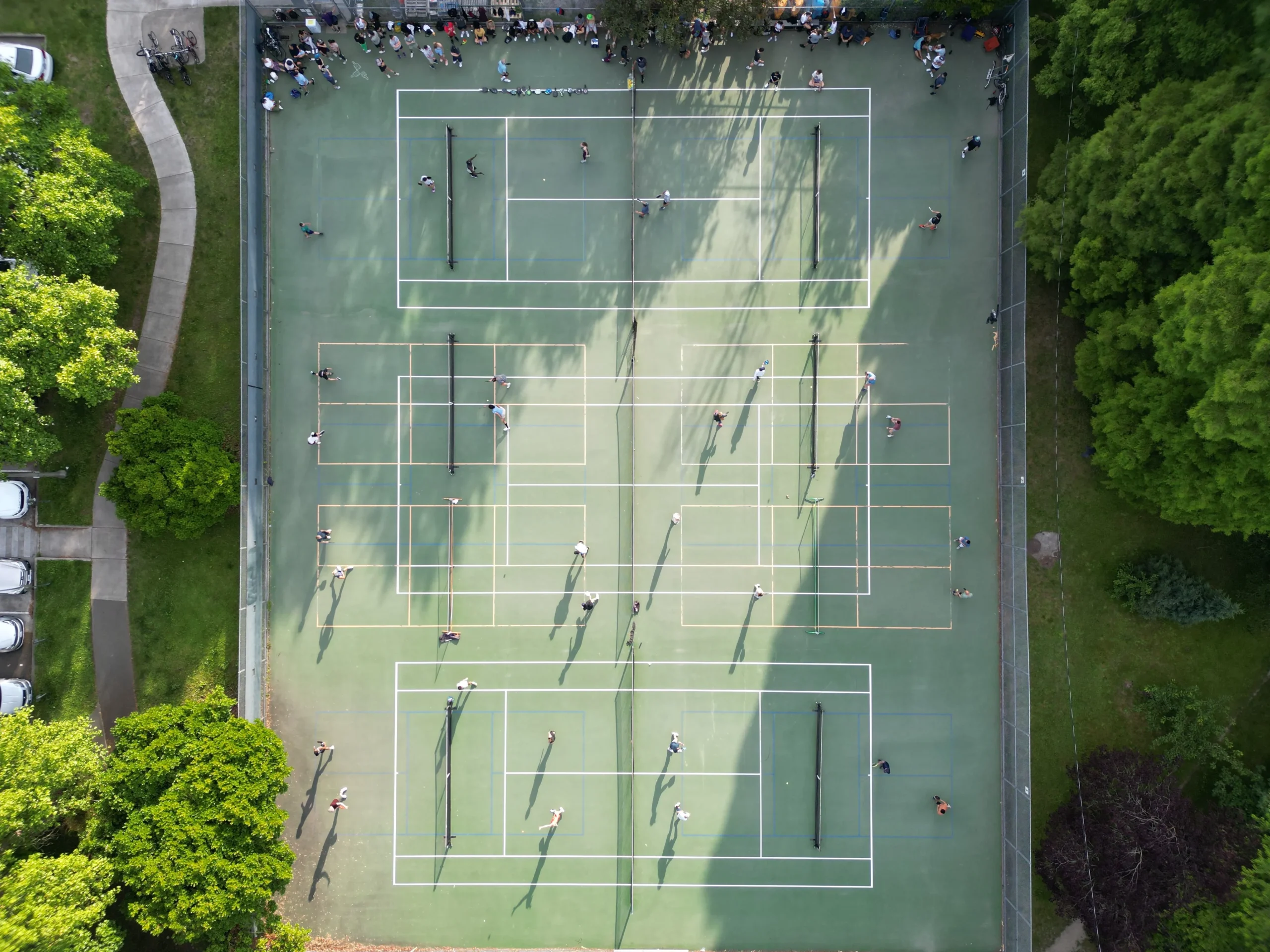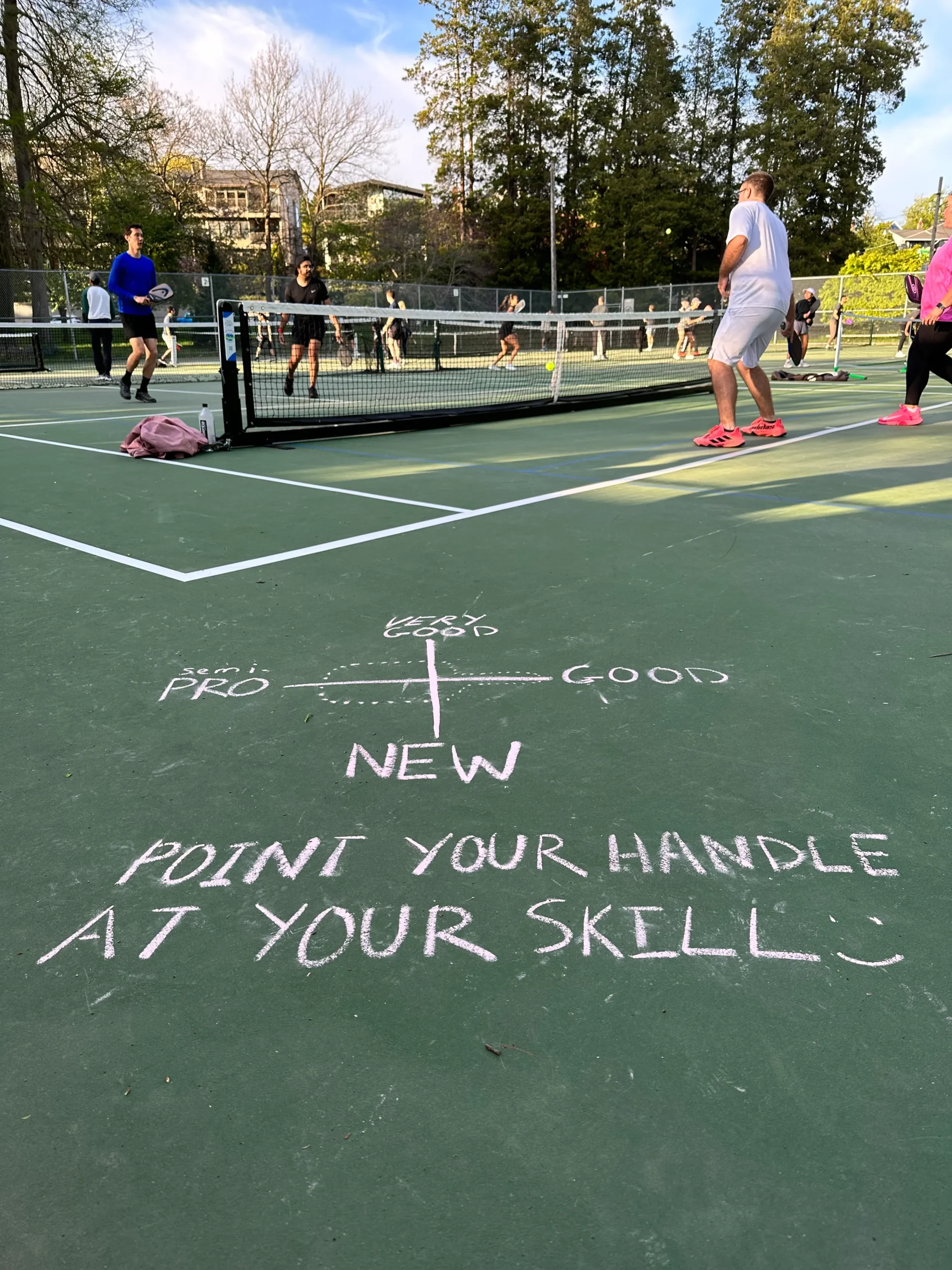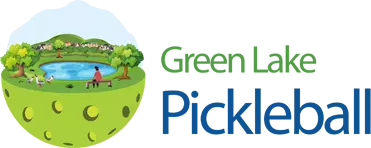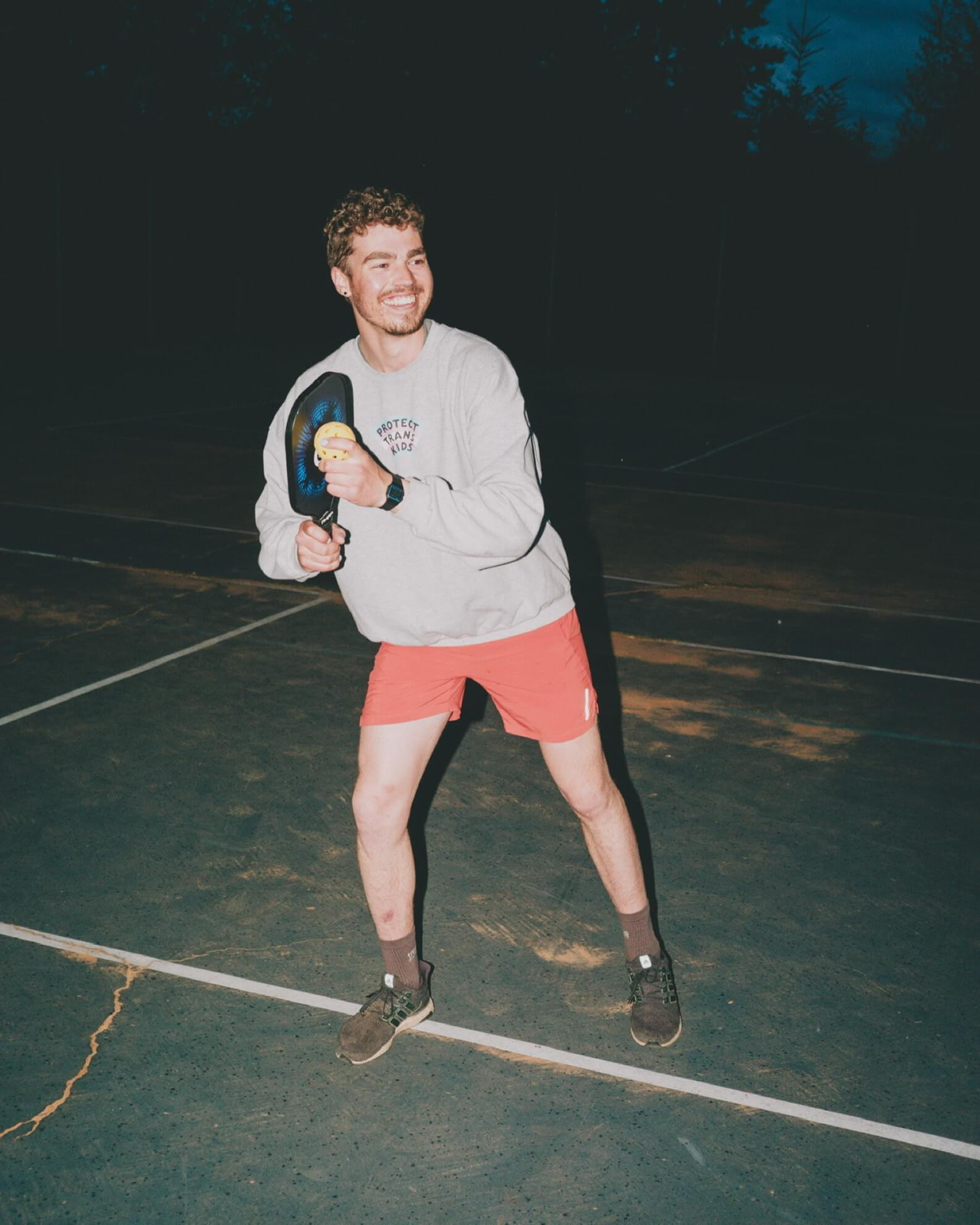Communities
In Seattle Through
Pickleball!
helps us to keep
building a community
of pickleball lovers!
with us and our
announcements!
Welcome to Green Lake Pickleball
Karina and Carlos take 3.0 Mixed Doubles Gold at The Drop in Tacoma.
Go GLP!
Go GLP!
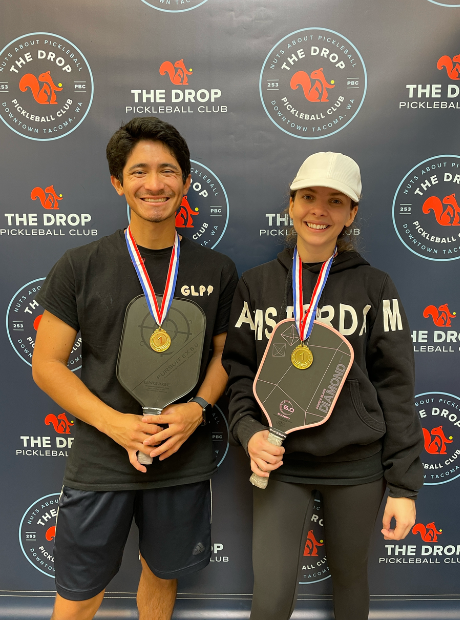
Green Lake Pickleball (GLP) is the name we've chosen for the informal group of players who gather for "drop-in" play at the Green Lake East courts located near the Community Center. GLP is NOT a club; we don't collect dues and we have neither a charter, nor a governance board, nor any formal club officers. But we do have a mission: to create and sustain a fun, inclusive, and challenging pickleball environment for players of all abilities. Player donations support our expenses (court reservations, balls, nets, etc.) and your active participation sustains and enriches the unique pickleball community at Green Lake.
Since you've managed to find our web address, you've probably already experienced, or heard of, the pickleball scene at Green Lake East. We hope you've enjoyed the fun and challenging play. As we continue to build this website (kindly developed and hosted by CI Web Group) and links get filled with content, we'll notify you via our GLP Google group message board. In the meantime, check back every now and then and enjoy fun play at Green Lake.

Can A Tennis Player Share His Heart, And Courts, With Pickleball?
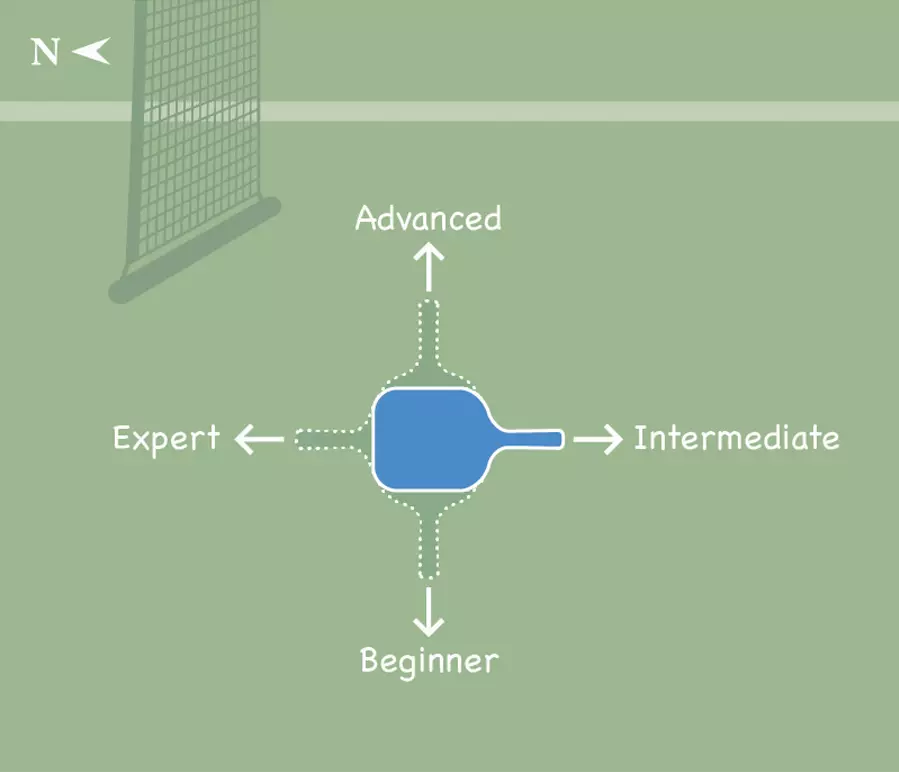
System For Stacking
We use a paddle-stacking method at Green Lake East that was first introduced by a few members of Green Lake Pickleball royalty (Frank Chiappone, Sean Oldridge, Steve Balch, and Clay Hess, to name a few) in the pre-Covid era. Pointing your paddle handle down (toward the lake) says you're beginner; handle to the right = intermediate, up = advanced, and left = pro.
Most Common FAQs
GLP uses a skill-based paddle-stacking system for open play at Green Lake East that was first introduced by a few members of Green Lake Pickleball royalty (Frank Chiappone, Sean Oldridge, Steve Balch, and Clay Hess, to name a few) in the pre-Covid era. That system, with only minor modifications, remains in place today to help match like-skilled players, from beginner to expert, in fun and competitive games.
GLP SKILL RATINGS (Autumn 2023)
These rating guidelines summarize USAP pickleball rating definitions. Please use them to objectively self-rate your skill level and to identify improvements you need to reach the next skill level. As applicable, stack your paddle diagonally if you self-rate between levels. The more honestly you stack, the better for all players at all levels.
That being said, we collectively grow as a pickleball community by playing with people both stronger and weaker than ourselves. Be both respectful and generous; it’s fun, instructive, and friendly to play “up” and play “down” every now and then.
1. Beginner: 1.0 to 2.5 skill rating
a. Learning the basic shot strokes, scoring, and detailed rules.
b. Can sustain a short rally of easy-paced shots with players of equal ability.
c. Needs to improve consistency, power, net play, and court coverage.
2. Intermediate: 2.5 to 3.5 skill rating
a. Has learned the basic shot strokes, scoring, and detailed rules.
b. Can sustain a rally of medium-paced shots with advanced players.
c. Needs to improve directional intent, power, depth, and consistency, especially in backhand and serve.
d. Needs to improve control of dink rallies, net play, faster-paced court coverage, and strategies.
3. Advanced: 3.5 to 4.5 skill rating
a. Can sustain a rally of fast-paced shots with expert players with consistent and dependable strokes.
b. Demonstrates reliable serves, lobs, overhead slams, dink and drop shots, and uses spin with success.
c. Exhibits more aggressive approach shots and net play.
d. Can occasionally force return failures when serving.
e. Needs to master consistency, power, accuracy, speed, and winning strategies.
f. Needs to better anticipate opponent’s shots for improved court positioning.
4. Expert: 4.5 through 5.5+ skill rating
a. Has mastered the use of varying power, depth, spin, dink and drop shots.
b. Has mastered shot anticipation and shot placement, and regularly hits winning shots.
c. Has mastered a variety of 3rd shot strategies and styles of play with both forehand and backhand.
d. Forces opponents into making errors by aggressively keeping the ball in play.
e. Exhibits patience during rallies with the ability to create an opportunity to attack utilizing the dink.
f. Rarely makes unforced errors.
g. Ready to play and win in competitive or tournament matches.
You don’t have to …. but you won’t make many friends at the courts if you don’t. Here are some thoughts and guidelines that might help you get the most out of your play at GLP and will surely help those you play with get the same.
1. No one can force you to play at any given skill level, but keep in mind that GLP’s stacking system was put in place to help players of all skills levels get the most out of the time they spend on the court during “open-play” times. Some players just want competitive games, some only to learn, some to socialize, but most play at GLP for a combination of all three. Please show respect for all players by stacking appropriately.
a. If you’re stacking “up” a skill level, you might check to see that the more advanced players in your stack are ok with that. A simple, “Do you mind if I try playing a game in your group?” can go a long way toward setting expectations and keeping everyone happy. Remember that one or two non-advanced players in an advanced stack makes the resulting game non-competitive.
b. If you find that you’re generally among much stronger players in whatever skill level you’ve chosen, you’re probably stacking “up.” Try stacking down a level until you’re at the top your group; then it’s time to move up!
c. If you’re an advanced player, consider stacking “down” every now and then or asking an aspiring player to join your group for a game. You might just enjoy the satisfaction that comes with both helping others improve and with making a positive contribution to the GLP community.
2. If you’re unsure of your skill level, self-assess using the “What’s my skill level?” FAQ, above, or ask more advanced players. But don’t take offense if that player assesses you (hopefully in an artful and thoughtful way) below the level in which you typically stack. You can still work towards your desired level and take solace in the fact that you surely have better skills in some areas of life than they do!
3. Unless you’re asked by a player to evaluate their skill level, please refrain from doing so — and particularly refrain from doing so in an unkind or public manner.
“Phantom stacking” is a technique whereby a player, already stacked in the queue — or in a game — has placed a second (“phantom”) paddle in the long queue of stacks to either double their game frequency or to save their place in a stack with other friends. Neither reason justifies the technique, which gives the phantom stacker an unfair playtime advantage. Remember: one player, one paddle. If you want to play in a stack with one, two, or three other friends, have those friends hold their paddles out until you’ve completed your game.
During the day/times that GLP reserves the courts for open play, phantom stackers will be appropriately shunned. At other day/times, see “Lord of the Flies.”
Send us a Message
Join the Green Lake Pickleball Google group to receive occasional GLP notices regarding court use and scheduling updates, financial reports, and information concerning our advocacy for more and better pickleball infrastructure near Green Lake.
Make a Donation
Green Lake Pickleball welcomes your non-tax-deductible Venmo donation. Contributions help defray the cost of court reservations, pickleballs, tape, nets, and court maintenance equipment.
Click the link or scan the image below with your phone to bring up Venmo:

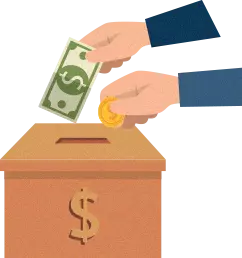
#Greenlakepickleball
